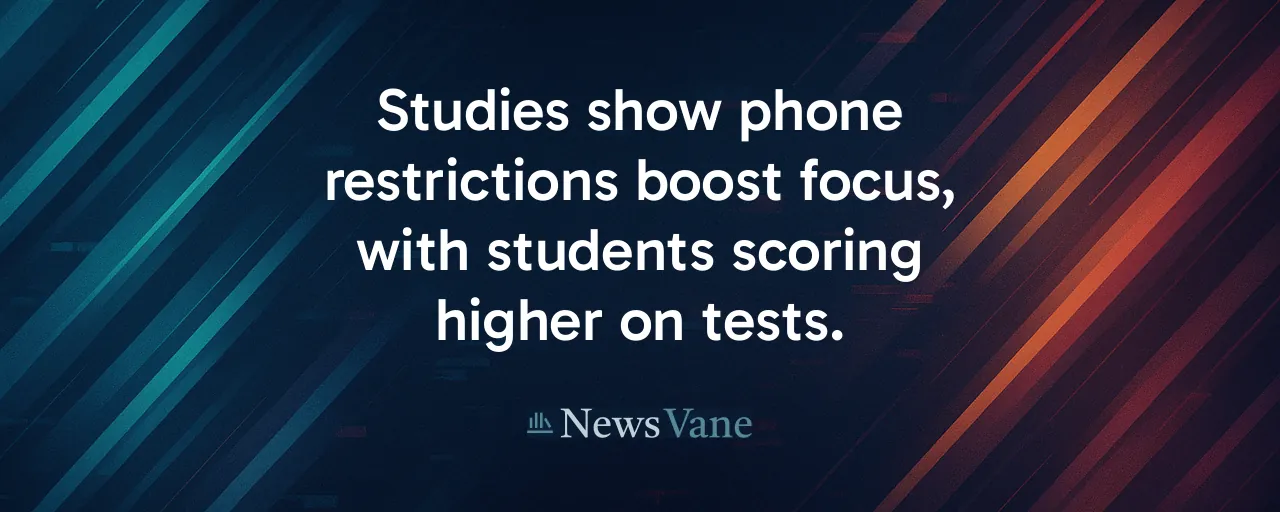Redefining the School Day
Come fall 2025, New York's public schools will embrace a new routine. A statewide ban on cell phones, smartwatches, and earbuds will take effect for K-12 students, lasting from the first bell to the last. Signed by Governor Kathy Hochul, this policy positions New York as the largest state to bar smartphones in classrooms, impacting millions. It stems from worries about distracted students, strained social bonds, and rising mental health challenges.
On June 10, 2025, Hochul joined 'The Kelly Clarkson Show' to explain the ban's roots. After visiting schools and talking with students, parents, and teachers, she noticed a troubling quiet in cafeterias and classrooms. Kids, she said, were glued to screens, missing chances to connect in person. The law aims to create distraction-free spaces where students can rediscover childhood and build real-world relationships.
This move reflects a wider push to rethink technology in education. States like Florida, Utah, and California have set their own phone limits, driven by concerns about learning and well-being. New York's approach is comprehensive, covering the entire school day. Still, the policy raises questions about how it will work in practice and whether it can address every student's needs.
What the Research Says
Evidence supports the case for limiting phones in schools. A 2015 UK study showed test scores rose 6.4 percent after phone bans, with struggling students seeing the biggest gains. In the U.S., a 2024 study found students near phone users scored lower in math, and a Bronx school noted better Advanced Placement results after restricting devices. These findings suggest phones disrupt focus, especially for those already behind.
Social and emotional effects are equally concerning. A 2022 Ontario survey tied heavy phone use to weaker friendships and less school connection. Teens who scroll excessively often struggle with conversation and feel lonelier. Mental health studies, like one from King's College London in 2024, link high smartphone use to anxiety and depression, particularly for girls. Though some question the scale of harm, the patterns are hard to ignore.
Teachers also feel the strain. A survey showed 74 percent believe phones pull students' attention toward videos or social media, away from lessons. By clearing classrooms of these distractions, the ban seeks to help educators teach and students engage, fostering environments where learning and connection thrive.
Voices on Both Sides
The ban has supporters and skeptics. Many parents and educators back it, citing improved focus and mental health. In districts with similar rules, students report less social pressure and more interaction. Indiana's pilot programs saw discipline issues drop 34 percent, and Ontario's ban cut bullying reports significantly. These examples fuel optimism that New York's policy could transform schools.
Yet some worry about its broad sweep. Parents fear losing emergency contact with their kids, a concern amplified by school safety debates. Families without home internet often rely on phones for schoolwork, and advocates for equitable education stress the need for alternative devices, especially for students with disabilities. Without these, bans risk leaving some students behind.
Another perspective calls for moderation over bans. In places like Meriden, Connecticut, schools use phones for tasks like quizzes or translations, teaching responsible use. These educators believe guiding students to navigate technology equips them for a digital world. New York, along with states like Florida and Arkansas, maintains a stricter stance.
Navigating the Rollout
Putting the ban into action poses challenges. Schools can choose enforcement tools, like pouches or caddies, but Hochul stressed the importance of keeping students in class, with a focus on avoiding suspensions for violations. New York has set aside $13.5 million for storage, though smaller districts may face budget constraints. Louisiana's experience shows that clear rules and structured enforcement ease transitions, but top-down approaches often spark pushback.
The policy taps into larger debates about kids and technology. While 73 percent of Americans favor school phone limits, some parents see them as overreach or worry about losing insight into school life. Students are divided: some value the break from screens, others rely on phones for schoolwork or friends. Hochul urges families to practice phone-free time at home to prepare, but success will depend on schools and communities working together.
What's at Stake
New York's ban is a high-stakes test for education. If it works, it could spur other states to act, joining the 26 already limiting phones. Places like Norway and Florida report better grades, fewer conflicts, and chattier hallways after bans. Yet New York's results will hinge on addressing enforcement, equity, and family concerns thoughtfully.
The policy also prompts reflection on childhood in a tech-driven world. Phones connect kids to friends and information but can overwhelm with notifications and comparisons. By carving out phone-free school hours, New York hopes to give students room to learn and grow. Still, schools have a role in helping kids develop tech skills for life beyond the classroom.
As the new school year starts, New York's classrooms will be a proving ground. Will students reconnect in person? Will teachers find lessons easier to deliver? The outcomes will influence education and how we balance technology's benefits and burdens, shaping the next generation one school day at a time.
